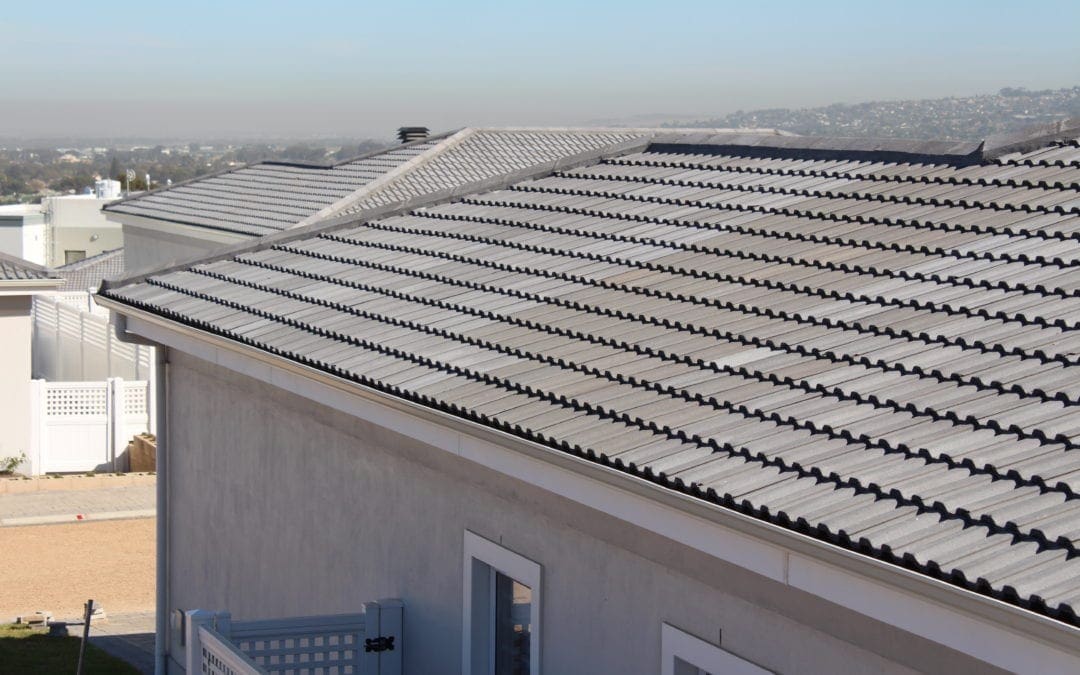Efflorescence describes white deposits found on building materials such as concrete roof tiles, block paving, clay bricks, calcium silicate bricks, mortar and concrete.
The term covers a number of phenomena and various forms can occur. The deposits found on different materials vary significantly in chemical composition and method of formation. The processes which give rise to efflorescence in clay products, for example, are different from those that affect concrete or fibre cement roofing products.
Efflorescence on concrete roof tiles and fibre cement slates
On concrete roof tiles and fibre cement slates, efflorescence is often categorised as ‘lime bloom’, which appears either as white patches or as a more general lightening in colour. With the latter, it is often misinterpreted as a fading or ‘washing out’ of the colour of the material.
With cement-based roofing products, subtly different reactions taking place at various stages of the production process and lifespan of the product can give rise to the formation of calcium carbonate. This appears on the surface of the tile or slate as a white haze.
Why does efflorescence happen?
Lime bloom is a natural result of the reaction between cement and water. The calcium hydroxide ‘lime’ is a product of this reaction, which is slightly soluble in water.
Under certain conditions, it can migrate through the concrete to the surface, where it, in turn, reacts with carbon dioxide in the atmosphere to produce a deposit of calcium carbonate crystals.
It is this deposit which gives rise to the white patches or overall lightening, but it is normally very thin and when wetted becomes transparent and is not visible.
The occurrence of lime bloom on concrete roof tiles is spasmodic and unpredictable, but weather conditions seem to be a significant factor.
Efflorescence forms more readily when the concrete tile becomes wet and dries slowly, and therefore occurs more often during winter.
It is generally only likely to occur in the early life of the product, so materials installed for a year or more without experiencing lime bloom are unlikely to be affected in the future.
How to remove efflorescence
Efflorescence is removed by natural weathering processes – as rainwater is slightly acidic, it gradually dissolves and washes away the deposits.
How long does efflorescence last?
How long the effects last depend on the amount of deposit and the local weather and atmospheric conditions.
The deposits on the roof tile surface will normally be expected to disappear in 6-12 months and will not reoccur.
Does efflorescence damage roof tiles?
Efflorescence may sound like a complicated chemical phenomena, but it is really a superficial characteristic feature that does not affect the durability of the product.
After the efflorescence is washed away, the original true colour of the product returns and its colour consistency is not hindered.
Anti-efflorescence surface coatings
Marley Roofing’s award-winning M22® and new affordable M11 coated concrete ranges eliminate this problem. With exceptional performance and aesthetic qualities, both Marley M22 and Marley M11 offers a long-term solution to lasting rich colour uniformity.
Efflorescence is removed by natural weathering processes – as rainwater is slightly acidic, it gradually dissolves and washes away the deposits.
How long does efflorescence last?
How long the effects last depend on the amount of deposit and the local weather and atmospheric conditions.
The deposits on the roof tile surface will normally be expected to disappear in 6-12 months and will not reoccur.
Does efflorescence damage roof tiles?
Efflorescence may sound like a complicated chemical phenomenon, but it is really a superficial characteristic feature that does not affect the durability of the product.
After the efflorescence is washed away, the original true colour of the product returns and its colour consistency is not hindered.
Anti-efflorescence surface coatings
Marley Roofing’s award-winning M22® and new affordable M11 coated concrete ranges eliminate this problem. With exceptional performance and aesthetic qualities, both Marley M22 and Marley M11 offers a long-term solution to lasting rich colour uniformity.

